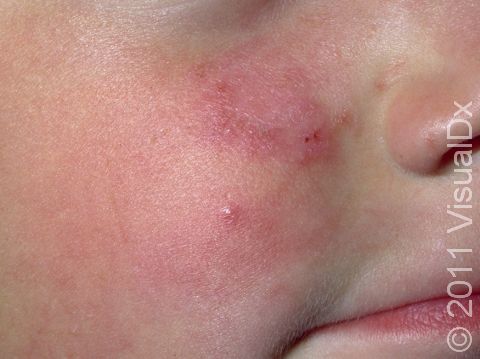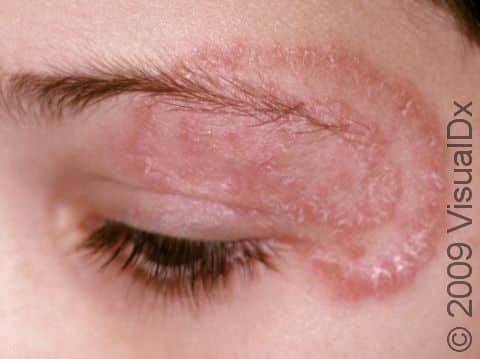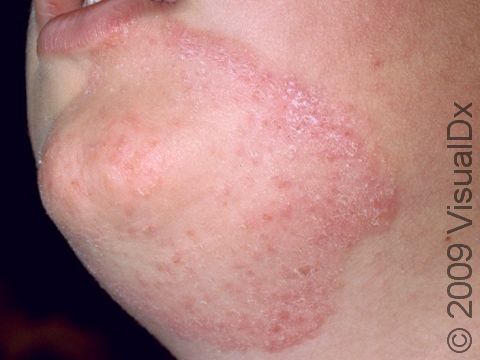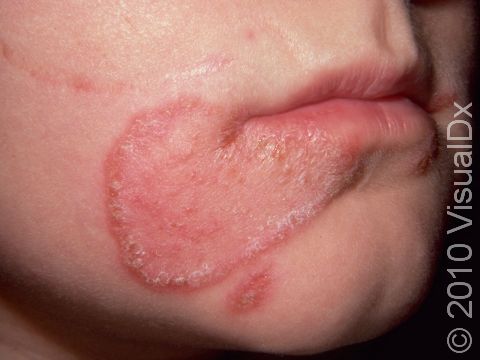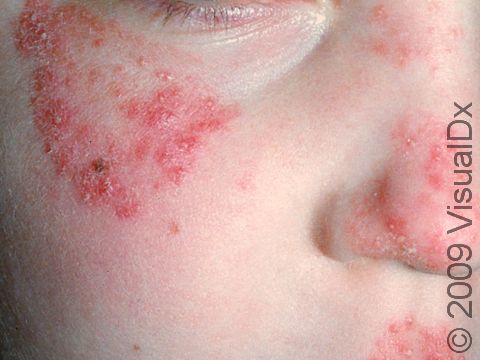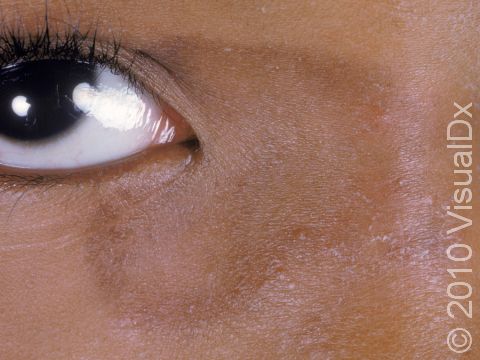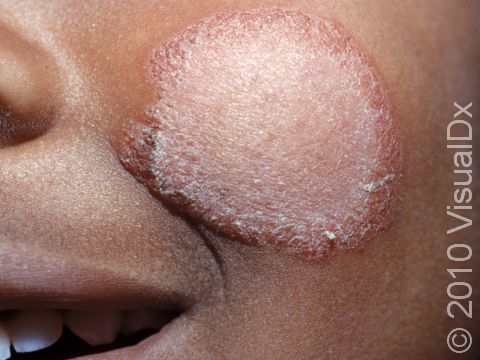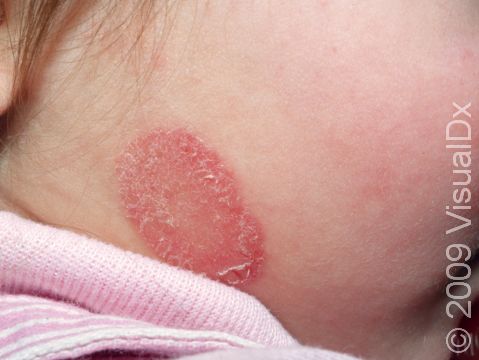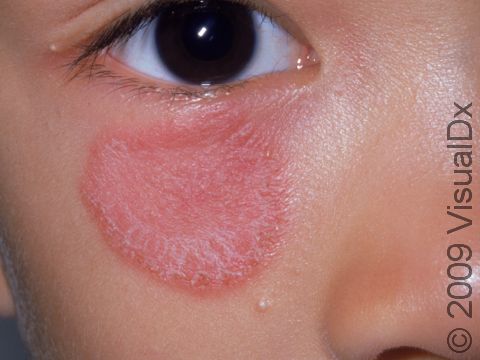Ringworm, Facial (Tinea Faciei)
Tinea infections are commonly called ringworm because some may form a ring-like pattern on affected areas of the body. Facial ringworm (tinea faciei), also known as tinea faciale or ringworm of the face, is a common noncancerous (benign) fungal infection of the surface (superficial) skin of the face. Facial ringworm may be passed to humans by direct contact with infected people, infected animals (especially kittens and puppies), contaminated objects (such as towels or locker room floors), or the soil.
In children and women, facial ringworm can appear on any part of the face. In men, it is known as beard ringworm (tinea barbae) when it occurs on the bearded part of the face.
Who's At Risk?
Facial ringworm may occur in people of all ages, of all races, and of both sexes. However, it is most frequently seen in adults aged 20–40. In addition, it is more common in warmer, more humid climates.
Signs & Symptoms
The most common locations for facial ringworm include:
- Cheeks
- Nose
- Around the eye
- Chin
- Forehead
Facial ringworm appears as one or more pink-to-red, scaly patches ranging in size from 1–5 cm. The border of the affected skin may be raised and may contain bumps, blisters, or scabs. Often, the central portion of the lesion is clear, leading to a ring-like shape and the descriptive name ringworm, which is a misnomer because there is no worm.
Facial ringworm is almost always itchy, and it may become itchier or feel like a burn after exposure to the sun.
Self-Care Guidelines
If you suspect that your child has facial ringworm, you might try one of the following over-the-counter antifungal creams or lotions:
- Terbinafine
- Clotrimazole
- Miconazole
Apply the cream to each lesion and to the normal-appearing skin 2 cm beyond the border of the affected skin for at least 2 weeks until the areas are completely clear of lesions. Because ringworm is very contagious, have your child avoid contact sports until lesions have been treated for at least 48 hours.
Since people often have tinea infections on more than one body part, examine your child for other ringworm infections, such as in the groin (tinea cruris, jock itch), on the feet (tinea pedis, athlete’s foot), and anywhere else on the body (tinea corporis).
Have any household pets evaluated by a veterinarian to make sure that they do not have a dermatophyte infection. If the veterinarian discovers an infection, be sure to have the animal treated.
Treatments
To confirm the diagnosis of facial ringworm, your child’s physician might scrape some surface skin materials (scales) onto a glass slide and examine them under a microscope. This procedure, called a KOH (potassium hydroxide) preparation, allows the doctor to look for tell-tale signs of fungal infection.
Once the diagnosis of facial ringworm is confirmed, your physician will probably start treatment with an antifungal medication. Most infections can be treated with topical creams and lotions, including:
- Terbinafine
- Clotrimazole
- Miconazole
- Econazole
- Oxiconazole
- Ciclopirox
- Ketoconazole
- Sulconazole
- Naftifine
Rarely, more extensive or long-standing infections may require treatment with oral antifungal pills, including:
- Griseofulvin
- Terbinafine
The infection should go away within 4–6 weeks after using effective treatment.
Visit Urgency
If the lesions do not improve after 1–2 weeks of applying the over-the-counter antifungal creams, see your child’s doctor for an evaluation.
References
Bolognia, Jean L., ed. Dermatology, pp.1179. New York: Mosby, 2003.
Freedberg, Irwin M., ed. Fitzpatrick’s Dermatology in General Medicine. 6th ed. pp.1998. New York: McGraw-Hill, 2003.
Last modified on August 16th, 2022 at 2:44 pm

Not sure what to look for?
Try our new Rash and Skin Condition Finder
